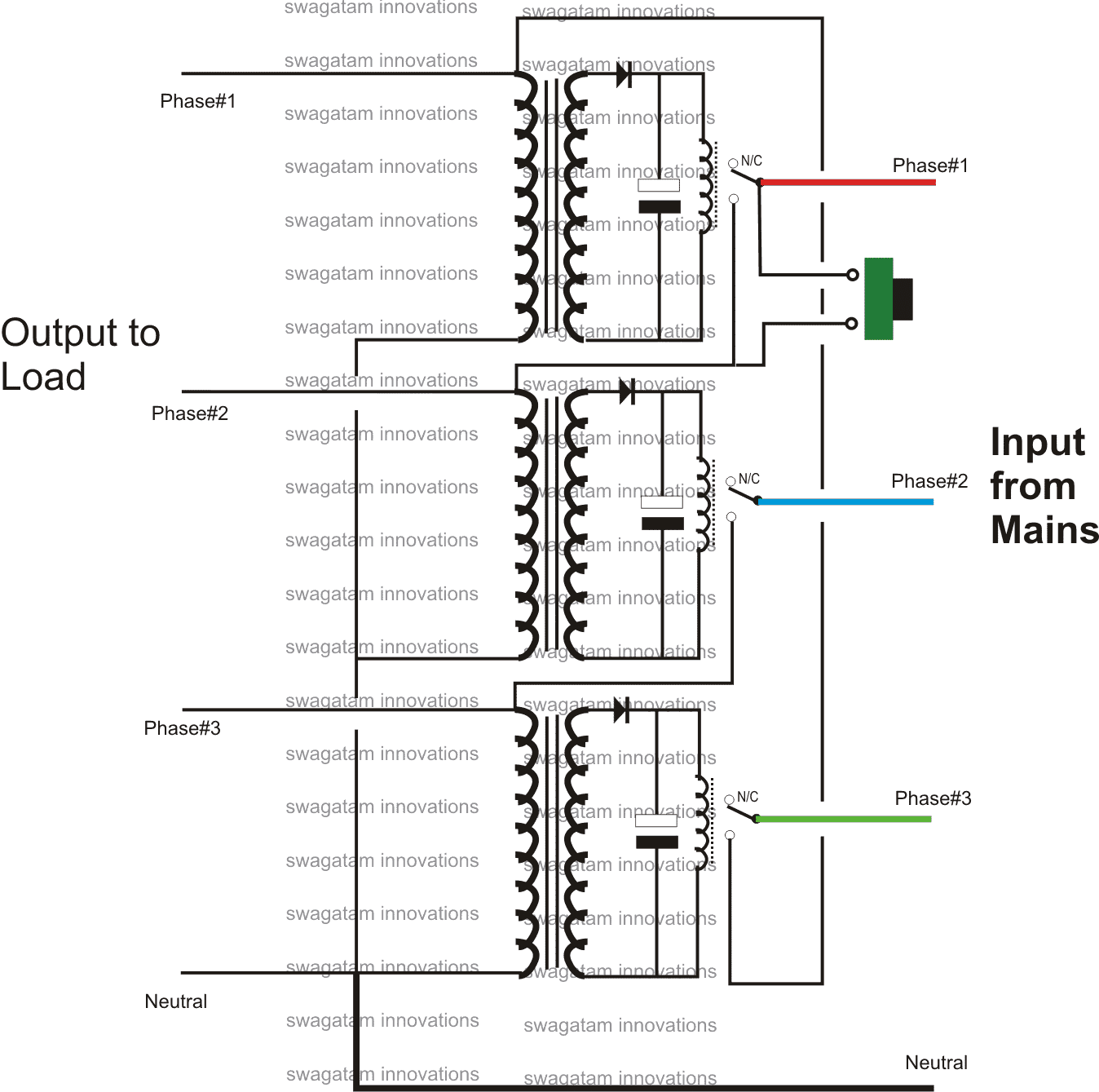In this post I have explained a couple simple circuits which when installed will prevent single phase occurrence in a 3 phase system.
Introduction
We all know that for operating heavy electrical loads three phase power or AC is required in order to make the functioning efficient and viable.
However this necessitates the presence of all the three phases at all circumstances. If any of the phases fail, can cause catastrophic consequences to the connected systems. The following artice offers a simple yet effective solution for tacking the above conditions.
As discussed above, a three phase load such as an industrial heavy motor will require the presence of all the three input AC mains phases for reliable and correct operations.
If there's any discrepancy with the presence of the input phases, the motor might start operating under heavily stressful and abnormal conditions.
This might cause huge current consumption, heating of the winding and ultimately burning of the motor parts.
Circuit Operation
The circuit of a single phasing preventor shown below can be effectively used for eliminating all kinds of undesirable consequences that might result from an abnormal three phase issues.
In the diagram we can see the use of three transformer/relay driver stages.
The transformers can be the normal step-down types, rated appropriately for switching the connected relays.
One of the input primary terminals of all the transformers are made common and connected with the neutral line.
While the other terminals of each transformer are joined to the respective first, second and the third phases of the input mains.
However the above connections are done cleverly via the relay N/O contacts of the subsequent relay assemblies for implementing the required single phasing prevention.
Initially when the set-up is integrated with the the three phases as per the given connections, the phases are remain cut off from the output load, because the relay contacts are all open.
On pressing the given push button, the particular phase in the line is allowed to reach the second or the middle transformer primary winding.
The middle transformer instantly operates its own relay, whose contacts just like the above relay connects the second respective phase with the primary of the bottom transformer, which finally operates its relay powering the top transformer.
Once this happens the entire system gets latched via the N/O contacts of the relays such that now even if the push button is released the system continues and sustains the voltages across the outputs and to the transformers.
Now suppose if any of the phases become low or fails, the particular transformer in line instantly deactivates its relay and the whole system of relays break down in sequence, immediately halting and disconnecting the output loads.
Thus the system effectively prevents the loads from operating under the absence of any of the phases making it sure nothing goes out in fumes.
The circuit was designed exclusively by me, I guess so, if it's already been discovered kindly provide me with the link:

hello sir thanks alot i was successful i finally completed my inverter and it works best.
i have a question regarding this system yes the tranfo used are stepdown but i want to use a 0-240v primary and 0-12v secondary for powering the relay am i correct there thanks
That’s great Olupot, congrats on that!
I don’t think the above explained circuit is the best way to control single phasing, instead you can try the opamp based circuit as shown in the following link:
/blog/single-phase-preventer-circuit/
Hi….. I have one doubt please tell answer. I have one single phase preventer, is it act as a over voltage protection…… If we give 485v to input, it will ON or not….please say answer for it anyone….
Hi, no it will not protect from high voltages…it will switch ON at 485v if all 3 phases are present
dear Sir, i have know from someone, we can make communication using 230v power ac current line` can you give me an intercom circuit to talk with my friend using current line, there is about 5 km between our houses, plz
Dear Thilana, 5km distance looks too large, I don't think that may easily feasible….room to room communication may be possible though,
I have posted one similar circuit here, which you can read for more info:
https://www.homemade-circuits.com/2016/02/appliance-remote-control-through-power.html